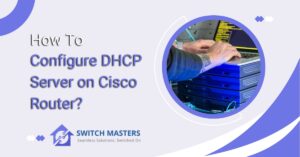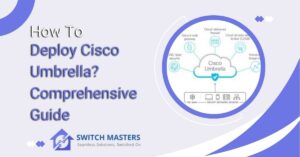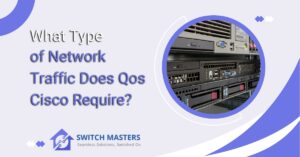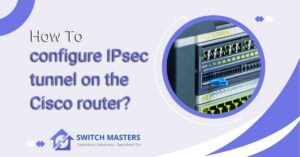Explore the seamless collaboration between these technologies, as VPC routers manage data flow across networks and firewalls fortify against threats. Gain insights into their dynamic synergy, empowering you to navigate the intricacies of network security confidently. Learn How Do VPC Routers and Firewalls Work to safeguard your digital infrastructure effectively.
Introduction
An understanding of Virtual Private Cloud (VPC) routers and firewalls is essential to the efficient and secure operation of cloud-based infrastructures. These two critical components play a central role in cloud-based infrastructure security and efficiency. A VPC router is responsible for managing data flows within and between network segments, whereas a firewall controls access and safeguards against threats to the network. This exploration examines the inner workings of VPC routers and firewalls, shedding light on their functions and mechanisms, as well as how they collaborate to protect data and resources.
Table of Contents
What is VPC?
VPCs, or Virtual Private Clouds, are fundamental concepts in cloud computing. They are virtual network environments made available by cloud service providers, such as Amazon Web Services (AWS), Google Cloud Platform (GCP), Microsoft Azure, etc. A VPC allows users to create isolated, private networks within the cloud infrastructure, mirroring the functionality of traditional on-premises networks.
Here are some key characteristics and components of a VPC:
- Isolation: Using VPCs, you can create logical network isolation within the cloud. Each VPC operates independently, so all traffic and resources within a VPC are isolated from each other.
- Private IP Addressing: It is important to note that instances (virtual machines) within a VPC are assigned private IP addresses. These addresses are not accessible directly from the internet, which enhances the security of the VPC.
- Subnets: Within a VPC, resources are organized and additional network control is provided by subnets, which are smaller, segmented networks within the VPC.
- Routing: In a Virtual Private Cloud (VPC), routing tables determine how traffic is directed within the VPC and between the VPC and external networks, such as the internet or other VPCs.
- Security: A virtual private cloud can be configured with Network Access Control Lists (NACLs) and Security Groups (in the case of Amazon Web Services) or similar security mechanisms in other cloud platforms to control inbound and outbound traffic and enhance security.
- Connectivity: Hybrid cloud architectures are possible when VPCs are connected via VPNs (Virtual Private Networks) or dedicated direct connections.
- Scalability: It is easy to scale up or down VPCs depending on the workload and resource requirements that are changing.
- Flexibility: The user may define the IP address range of their VPC, create custom routing rules, and configure network settings according to their specific needs.
What is a Firewall?
Firewalls are network security devices or programs that act as barriers between a trusted network (such as a corporate or home network) and an untrusted network, typically the Internet. As a result, the network is protected from unauthorized access, cyberattacks, and potential threats by monitoring, filtering, and controlling the network’s incoming and outgoing traffic.
Here are the key functions and characteristics of a firewall:
- Traffic Filtering: To determine whether a data packet should be allowed or blocked, firewalls examine packets entering or exiting the network and apply predefined rules based on factors such as IP addresses, port numbers, protocols, or specific words.
- Access Control: As a result of firewalls, access control policies are enforced, which specify which users, devices, or applications are allowed to access specific resources or services within the network. This prevents unauthorized access to sensitive information.
- Stateful Inspection: Stateful inspection is used by many modern firewalls to keep track of the state of active connections. In other words, they can make security decisions based on the state of a connection rather than just individual packets.
- Proxying and Network Address Translation (NAT): It is possible to use firewalls to act as intermediaries (proxies) between internal users and external resources by masking internal IP addresses using NAT, which adds a layer of privacy and security.
- Intrusion Detection and Prevention: In some advanced firewalls, intrusion detection and prevention systems (IDPS) are installed to detect and block suspicious traffic patterns and behaviour in real-time.
- Logging and Reporting: A firewall keeps logs of network activity that can be used for network monitoring and auditing purposes. These reports can provide insight into network traffic and security incidents.
- Application Layer Filtering: By inspecting traffic at the application layer (Layer 7 of the OSI model), next-generation firewalls (NGFWs) can make decisions not only based on ports and protocols, but on specific applications and services.
- Security Policies: A firewall is configured with security policies which define the rules and actions to be taken for different types of traffic, according to the security requirements of the organization.
- Firewall Types: Firewalls come in a variety of forms, such as hardware firewalls, software firewalls, cloud-based firewalls, and even host-based firewalls. The type of firewall used will depend on both the network architecture and the security requirements.
As the first line of defense against cyber threats and unauthorized access attempts, firewalls are an integral part of any network security strategy. As a result, they protect sensitive data, maintain network integrity, and ensure the confidentiality, availability, and integrity of network resources are of paramount importance. As cyber threats continue to evolve, firewalls adapt to new challenges, providing robust protection for today’s interconnected world.
How do vpc routers and firewalls work?

VPCs in Google Cloud Platform come with built-in routing capabilities that are managed by Google. Each VPC has routing tables that serve as the internal roadmaps for directing traffic between instances within that network. Instances can seamlessly communicate with each other, even across different subnetworks and GCP zones, without the need for external IP addresses, by using these routing tables.
Security Measures in VPC Routers and Firewalls
Cloud computing environments require virtual private clouds (VPCs) routers and firewalls to ensure the integrity and security of network traffic, which are critical components. Our next step is to examine the security measures implemented in VPC routers and firewalls that protect cloud resources.
Security Measures in VPC Routers:
- Network Segmentation: With VPC routers, you are able to segment your network into subnets, which helps isolate resources and prevent lateral movement of threats within a VPC.
- Routing Control: The routers within a VPC implement routing tables that determine how traffic is forwarded. As part of security measures, the routers can specify routes and enforce routing policies, enabling traffic to flow in accordance with security guidelines.
- Route Filtering: It is common for VPC routers to include route filtering and route propagation controls. These features provide administrators with the ability to filter and control route announcements and propagations, thus preventing unauthorized access to resources.
- VPN Integration: It is possible to establish secure communications between VPCs or between on-premises networks and VPCs through virtual private networks (VPNs). VPN connections are handled by routers in the VPC, ensuring that data integrity and confidentiality are maintained during transit.
Security Measures in VPC Firewalls:
- Access Control Lists (ACLs): ACLs in VPCs provide security by allowing or denying traffic based on predetermined rules. They can be used to restrict inbound and outbound traffic at the subnet level, adding an additional layer of protection.
- Security Groups: As a stateful firewall, Security Groups limit or permit traffic based on rules applied to instances within a Virtual Private Cloud. They control which resources are permitted to communicate with one another and under what conditions.
- Application Layer Filtering: In some cloud environments, next-generation firewalls (NGFWs) offer application layer inspection, which allows them to identify and block traffic based on the application level, thus providing granular control over specific services and applications.
- Intrusion Detection and Prevention: As part of their virtual private cloud firewalls, some cloud providers provide advanced security services, including intrusion detection and prevention, which can detect and mitigate security threats in real time.
- Logging and Monitoring: As a result of VPC firewalls, logs are generated and monitoring capabilities are offered. Security events, rules violations, and traffic patterns are logged, allowing security teams to analyze and respond to potential threats in a timely manner.
- Scalability: As the environment grows, VPC firewalls can expand to accommodate increased traffic loads and changing security requirements. As a result, protection remains effective even as the environment grows.
- Web Application Firewall (WAF): Cloud service providers provide Web Application Firewalls that protect web applications from common online threats such as SQL injection and cross-site scripting (XSS).
Challenges and Solutions
As a fundamental component of securing and managing network traffic in cloud environments, virtual private cloud (VPC) routers and firewalls are fundamental components. While they offer robust security features, their implementation is associated with several challenges. Let’s explore these challenges and the solutions we can offer to address them:
Challenges:
- Complex Configuration: Configuring VPC routers and firewalls can be complex, especially for organizations with large and intricate network architectures. Defining security rules, routing policies, and access controls requires careful planning and expertise.
Solution: Utilize infrastructure-as-code (IaC) tools to automate the provisioning and configuration of VPC resources. Tools like AWS CloudFormation or Terraform can simplify and standardize the setup process. - Visibility and Monitoring: Gaining comprehensive visibility into network traffic and firewall rule effectiveness can be challenging. Without adequate monitoring, it’s difficult to detect and respond to security incidents promptly.
Solution: Implement robust logging and monitoring solutions to track network activity and security events. Utilize cloud-native monitoring tools or integrate third-party solutions for real-time analysis and alerting. - Scalability: As cloud environments grow, scaling VPC routers and firewalls to handle increased traffic and resource demands becomes essential but can also be complex.
Solution: Leverage auto-scaling capabilities offered by cloud providers to automatically adjust the capacity of VPC components based on traffic patterns and resource utilization. - Rule Management: Managing a large number of security rules in firewalls and routing policies in VPC routers can become unwieldy, leading to potential misconfigurations and rule conflicts.
Solution: Implement strict naming conventions and documentation practices to keep track of rules. Regularly audit and clean up unused or redundant rules to maintain an efficient rule set. - Security Misconfigurations: Misconfigurations are a common cause of security breaches. Inaccurate firewall rules or routing policies can inadvertently expose resources to threats.
Solution: Adopt a proactive approach to security testing and validation. Use security scanning tools and automated checks to identify and rectify misconfigurations before they pose a risk.
Challenges Specific to VPC Routers:
- Complex Routing: In multi-region or multi-cloud deployments, managing complex routing across VPCs and external networks can be challenging.
Solution: Implement robust network architecture design and use cloud provider features like VPC peering, Transit Gateway, or Cloud VPN to simplify and centralize routing management.
Challenges Specific to VPC Firewalls:
- Application Awareness: Traditional firewall rules based on IP addresses and ports may not provide adequate security for modern, application-centric workloads.
Solution: Deploy next-generation firewalls (NGFWs) that can inspect traffic at the application layer and apply rules based on specific applications and services. - Performance Impact: Applying extensive firewall rules can sometimes lead to performance degradation, especially for high-throughput applications.
Solution: Optimize firewall rules and consider using advanced firewall features like connection tracking to minimize performance impact while maintaining security.
FAQ’s
What are Google’s VPC networks and subnets?
It is possible to access resources globally through Virtual Private Cloud (VPC) networks. A VPC network consists of a set of IP addresses referred to as subnets. Subnets have a regional scope and are assigned specific IP addresses. The terms ‘subnet’ and ‘subnetwork’ are interchangeable in Google Cloud.
How do VPC routers and firewalls work in GCP?
Within Virtual Private Clouds (VPCs), routing tables are designed to efficiently direct traffic. Google manages them seamlessly as an inherent feature. Whether you are using Google Cloud Platform (GCP) instances within the same network, across subnetworks, or different zones, these tables play a vital role in forwarding data between instances. A remarkable feature of this system is that it does not require external IP addresses to perform this function.
How many subnets can a VPC have?
How many subnets can I create per VPC? At present, you can create up to 200 subnets per VPC. If you require additional subnets, you can open a support case in the support centre.
Is a VPC like a VLAN?
Although VPCs and VLANs are frequently used interchangeably, they are distinct concepts. Is it possible to use a VLAN as a VPC? Yes, this is possible.
What are internet gateways in VPC?
The Internet gateway is a component of a virtual private cloud (VPC) that facilitates communication between the VPC and the Internet while providing high levels of scalability, redundancy, and availability.
Conclusion
The synergy between VPC routers and firewalls is the linchpin of robust network security. VPC routers effectively manage the flow of data, directing it seamlessly across instances and subnetworks. This dynamic duo, when combined with firewalls that control access and defend against potential threats, creates an effective digital defense. The understanding of how VPC routers and firewalls work not only demystifies their intricate mechanisms, but also empowers businesses and individuals to navigate the rapidly evolving landscape of cybersecurity with greater confidence and resiliency.















